Photothermolysis, a cosmetological procedure of fractional laser resurfacing, will help to maintain the youthfulness of the skin, to suspend the natural aging processes.
Photothermolysis - what kind of procedure
Laser resurfacing technologies have been used for a long time, but photothermolysis was a breakthrough in world cosmetology - a minimally invasive, safe, no rehabilitation method for solving aesthetic skin problems. The procedure launches the natural processes of rejuvenation or elimination of skin defects through cell renewal and collagen synthesis in the deep layers of the epidermis.
The essence of fractional laser resurfacing is that the beam does not act as a solid spot, but, being fractionated (dividing into thin microbeams), disintegrates into a kind of matrix-grid. This effect gives a pronounced effect and lasting result. This does not require pain relief and a long recovery period, as after conventional laser resurfacing.
Ablative and non-ablative methods
Fractional photothermolysis is of two types: ablative and non-ablative. Non-ablative technology is designed to solve aesthetic problems: remove scars, scars, post-acne, pigmentation, as well as to smooth shallow wrinkles. Such resurfacing has a thermal effect on individual components of the dermis without destroying the epidermis.
The renewal of the skin occurs due to the synthesis of new collagen and the formation of the extracellular matrix. At the same time, intact skin areas contribute to the rapid recovery of microscopic damage, which minimizes the risk of side effects.
Non-ablative photothermolysis is completely safe and can be used without additional refrigeration. This is possible because the skin is exposed to microscopic damage, therefore, the risk of extensive heating of the treated area is minimized.
Ablative technology allows penetration into deeper layers of the skin, which contributes to the comprehensive rejuvenation of any part of the body. The skin is tightened, becomes firm, elastic, fine wrinkles are completely smoothed out, deep ones become less noticeable.
At the same time, the desired effect can be achieved in just 1 session; a course is not required here, as with other types of rejuvenation.
With ablative photothermolysis, anesthesia may be required, but in this case, a special cream will suffice, there is no need for medication pain relief, as with conventional laser resurfacing.
Both types of fractional laser are quite effective, safe, and are characterized by a short rehabilitation period. Often, cosmetologists use them together to solve various problems.
Benefits of laser rejuvenation
A fractional laser has the following advantages:
- Minimal trauma to the skin, which eliminates the occurrence of painful sensations and shortens the recovery period.
- Guaranteed result - studies have shown that the synthesis of new collagen increases up to 4 times, not only at the point where the microbeam hit, but also in the area next to the treated area.
- Controllability of the process by a specialist cosmetologist, who regulates the intensity of exposure to laser beams and the depth of their penetration, which contributes to the achievement of a lasting effect without the risk of complications.
- The procedure is suitable for any part of the body (face, abdomen, thighs, buttocks) and for all skin types. It has no age restrictions, it is able to cope even with deep changes in the skin.
Indications for laser use
Indications for use:
- age-related changes in the skin (wrinkles, loss of firmness, elasticity, flabbiness);
- rejuvenation of the eyelids, neck, décolleté area;
- photoaging;
- dark spots;
- treatment of post-acne, acne scars;
- treatment of stretch marks (stretch marks), scars and scars on the body.
Please note that fractional rejuvenation is not suitable for the treatment of keloid formations.
Contraindications to the procedure
The procedure is contraindicated in the presence of an inflammatory process on the skin: dermatitis, allergies, herpes, etc.
Also, thermal treatment is not recommended:
- with oncological diseases;
- while waiting for the child;
- on tanned skin (if less than 2 weeks have passed since sunbathing);
- after cosmetic procedures that injure the epidermis (chemical peeling, etc.).
Fractional thermolysis apparatus
Fractional photothermolysis is performed by cosmetologists using special devices. The following devices are considered modern and the most effective: Fraction CO2 (fractional CO2 resurfacing), SmartXide DOT (optical thermolysis), Dermablate MCL 30 (erbium laser rejuvenation). The choice of the device depends on the individual characteristics of the skin and on the desired effect.
Fraction CO2
The operation of the device is based on carbon dioxide laser beams, the main advantage of which is penetration into the deep layers of the epidermis. Such an effect not only eliminates aesthetic skin defects, but also has a pronounced lifting effect.
Fraction CO2 Laser Advantages:
- ultra-small size of the laser point, which ensures rapid healing of the skin;
- the pulse power has a fairly wide medical range, which allows you to adjust the depth of exposure to the rays;
- adjustment of the parameters of the beam density and pulse power allows the procedure to be carried out in a delicate or intensive version;
- the presence of various modes allows you to select an individual rejuvenation program in each case.
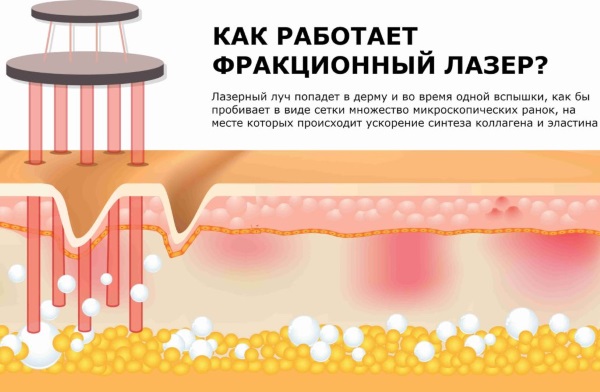
After the procedure with the Fraction CO2 device, there is minimal swelling and redness of the skin. The barrier properties of the epidermis are not disturbed, so there is no risk of infection.
SmartXide DOT
The operation of the device is based on laser pulses, which, when in contact with the skin, are converted into heat energy. This effect evaporates the cells, forming a matrix. With deep penetration into the layers of the epidermis, instant tightening is provided, which guarantees a pronounced lifting effect.
The renewal process starts in the treated area: the synthesis of fibroblasts and collagen is carried out. The microbeam damages only 20% of cells, the remaining 80% remain intact.
SmartXide DOT has 2 main modes:
- laser resurfacing - helps to remove aesthetic defects of the skin;
- deep impact - combats all signs of skin aging, provides an instant lifting effect.
The device is suitable for all areas of the body. Eliminates the risk of burns, tissue infection, does not cause painful sensations.
Dermablate MCL 30
The operation of the apparatus is based on the use of a single crystal of erbium oxide, which is characterized by high energy power.The wavelengths emitted by the device are well absorbed by the water inside the cells, which heats up under the action of the laser, which leads to the evaporation of the cell. This process is called ablation.
In this case, the upper layers of the epidermis are "cleaned off", and in their place new cells appear, more saturated with moisture and without the stratum corneum. The skin becomes soft and tender. Dermablate MCL 30 allows you to rejuvenate the skin in the deep layers of the epidermis.
By injuring the skin with microscopic wounds, the laser triggers the renewal processes: wound healing and the synthesis of new collagen tighten the skin, which gives a pronounced lifting effect. The device is characterized by high accuracy of action on problem areas of the skin, the ability to adjust the depth of penetration, painlessness.
Preparation for laser rejuvenation
2 weeks before the scheduled procedure, cosmetologists recommend adhering to the following rules:
- do not use products based on retinol, salicylic or glycolic acid;
- do not cleanse the skin with damaging products - peels or scrubs;
- do not visit the solarium, do not be in direct sunlight.
On the eve of the procedure, you should stop playing sports and drinking alcohol.
Please note that during the ablation procedure, the cosmetologist may recommend taking antiviral drugs, as well as prophylactic antibiotics, if there are objective indications for this.
Fractional photothermolysis
Fractional photothermolysis is performed only by a beautician who has undergone appropriate training in working with a particular device. The specialist evaluates the condition of the skin, notes the existing aesthetic imperfections. This information helps the cosmetologist to choose the desired program and the intensity of the fractional laser exposure.
Usually, photothermolysis does not require anesthesia, but on thin skin or with a low pain threshold, a special anesthetic cream can be used to reduce pain. A fractional resurfacing session lasts about 1 hour. There is a slight warmth and tingling sensation during the procedure.
Microbeams create a network of pinpoint microdamages on the surface or in the deep layers of the epidermis, while the outside of the skin is not damaged. Such an impact does not create one extensive wound surface: damaged areas alternate with intact ones, which contributes to the rapid recovery and renewal of the skin.
One flash of the photo laser covers 1.5 sq. cm of the area of the treated area. To avoid burns, a special nozzle is attached to the laser, which maintains the same distance from the thinnest laser beams to the skin throughout the entire procedure. The recommended number of procedures is from 2 to 4, with a frequency of once every 1.5–2 months.
Recovery after the procedure
At the end of the procedure, a feeling of heat in the skin and tingling will persist for another 1 hour. A cold compress can be used to relieve this condition.
Within 4-6 days, the skin will remain swollen and reddened, while the severity of these manifestations will depend on the depth of laser penetration and the existing aesthetic problem (the deeper the penetration, the stronger the swelling).
Also, after the procedure, the skin may darken, as after sunburn. This is due to the breakdown of pigment from previously damaged cells. These manifestations usually go away on their own after 2 weeks, provided that the epidermis is properly cared for.
Recommendations for skin care after fractional photothermolysis:
- the use of moisturizers (Bepanten);
- protection of the skin with special creams (SPF-50) from the sun's rays for 1 month;
- rejection of scrubs and other methods of cleaning the skin;
- quitting smoking and alcohol, as they inhibit the processes of restoration and renewal of the epidermis.
Please note that the crust formed after the procedure on the skin must fall off naturally; it is forbidden to remove it by any means or other mechanical means.
Complications
Adverse manifestations after the procedure:
- bacterial infection;
- expansion of capillaries, which lasts up to 3 days;
- swelling that lasts up to 6 days;
- hyperpigmentation ("pseudo tan");
- the occurrence of burns and erosion;
- exacerbation of acne;
- the appearance of hemorrhages under the skin.
The result of photothermolysis
Fractional laser resurfacing has a beneficial effect on the skin, the results of which become noticeable after the first session:
- the skin becomes taut, firm, elastic;
- fine wrinkles are smoothed out, deep ones become less noticeable;
- the turgor of the face improves, the contour becomes clearer;
- aesthetic defects (scars, scars, stretch marks, post-acne, pigmentation) disappear;
- the skin color is evened out, a healthy glow appears.
With a full course of photothermolysis, the result will last up to 3 years. If the result is periodically maintained after the course of treatment, then the youth of the skin can be prolonged up to 10 years.
Laser rejuvenation cost
Fractional photothermolysis is not a cheap procedure. Its cost depends on the chosen device and localization.
| Treatment area | price, rub. |
| Face (completely) | 15000 |
| Eyelid area | 5000 |
| Upper lip | 5000 |
| Neck | 10000 |
| Collar area | 15000 |
| Neckline | 15000 |
| Abdomen (striae) | 15000 |
| Hands | 5000 |
Scar resurfacing:
- full face - 15,000 rubles;
- cheeks (post-acne) - 7,000 rubles;
- forehead (post-acne) - 10,000 rubles;
- hips, buttocks, abdomen (5 sq. cm) - 1500 rubles
The fractional photothermolysis procedure will help rejuvenate the skin, starting the natural processes of collagen synthesis. In addition, laser resurfacing will help get rid of aesthetic defects: scars, scars, post-acne, stretch marks.
Useful videos about fractional photothermolysis and the rules for its conduct
What is fractional photothermolysis:
How is the procedure for fractional photothermolysis:

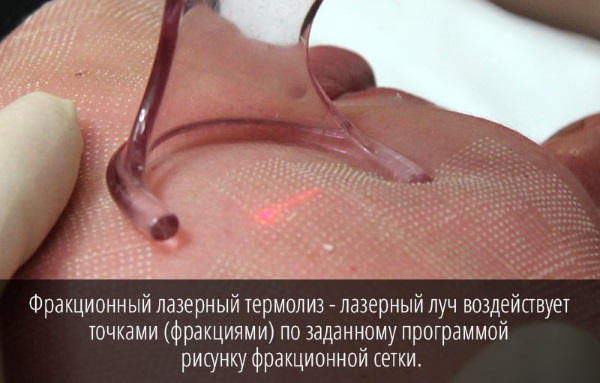
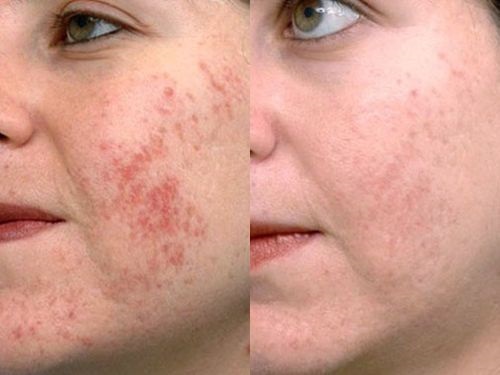
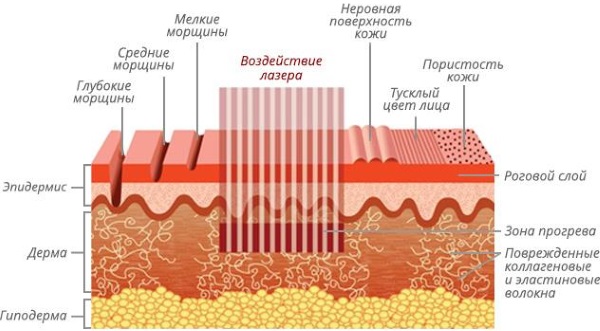
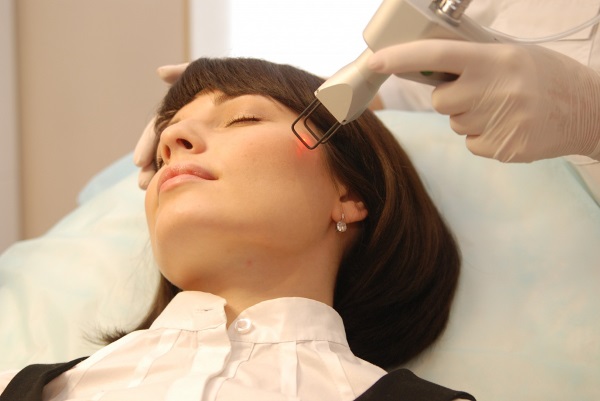
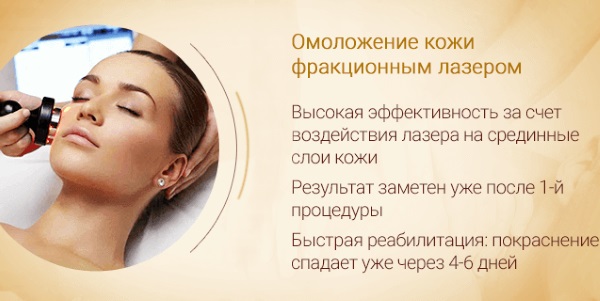
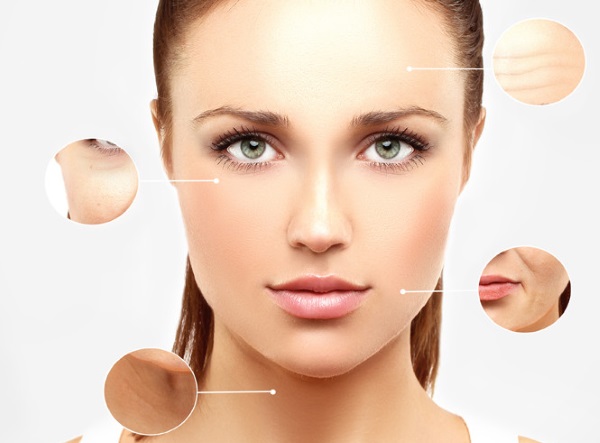
I have never heard of such a procedure ... There is a large scar on the body, which is very annoying, I wonder if such a laser will help get rid of it ...